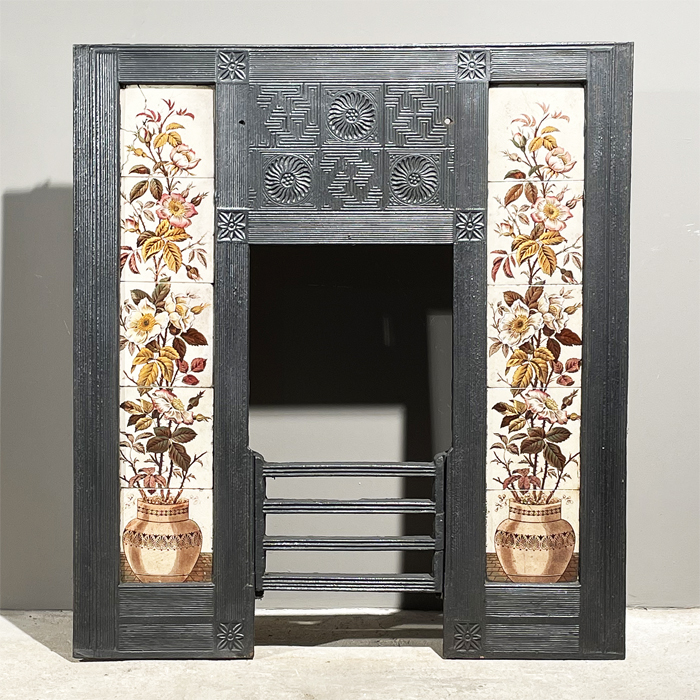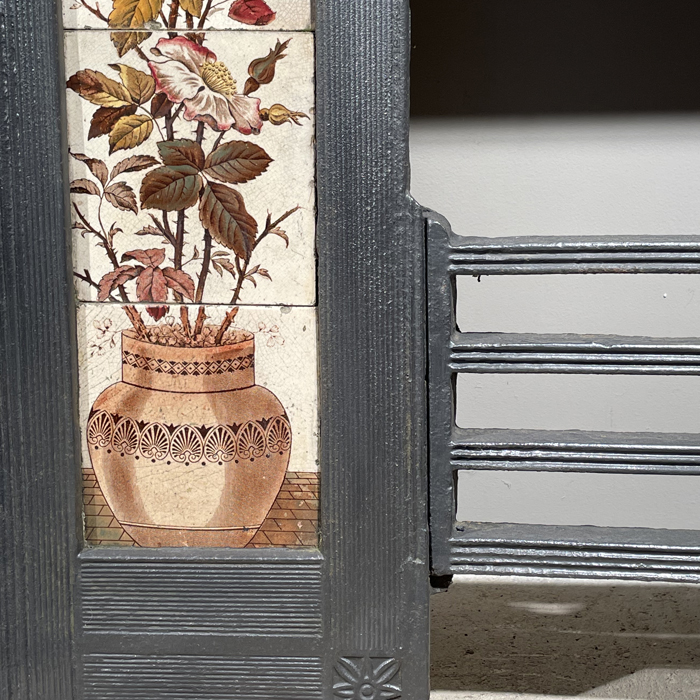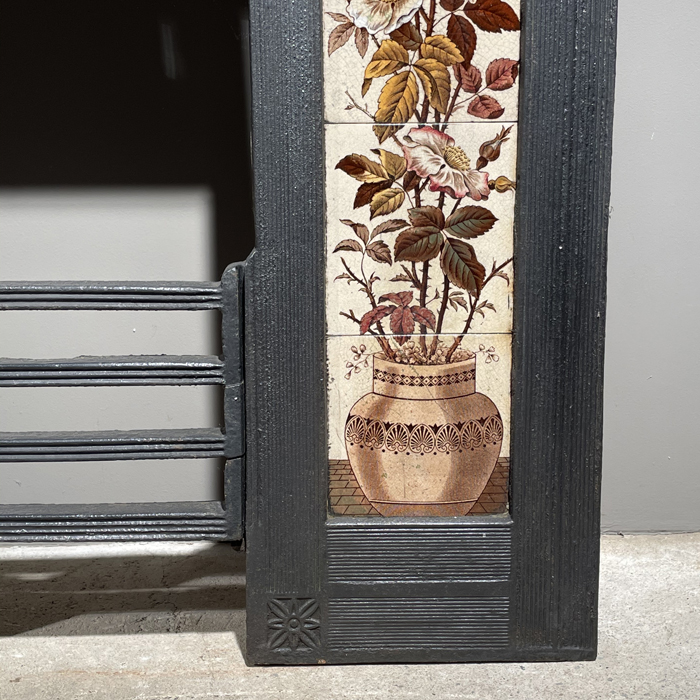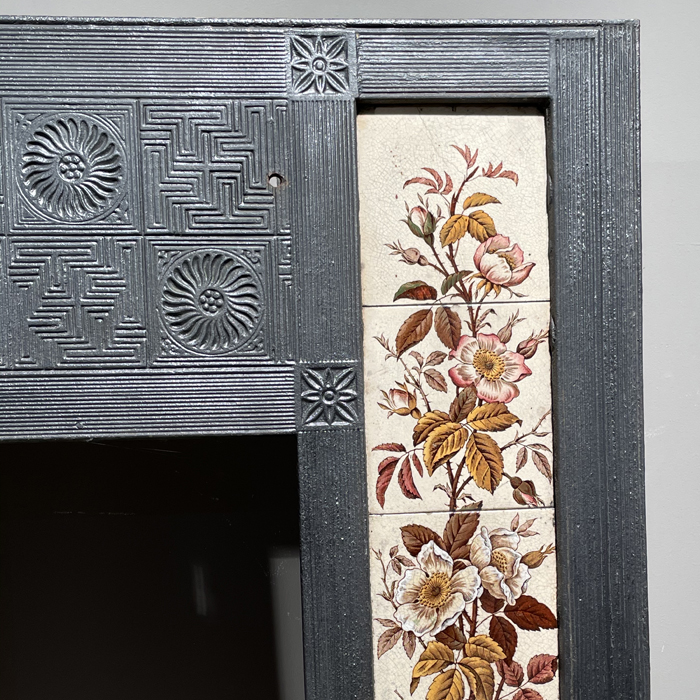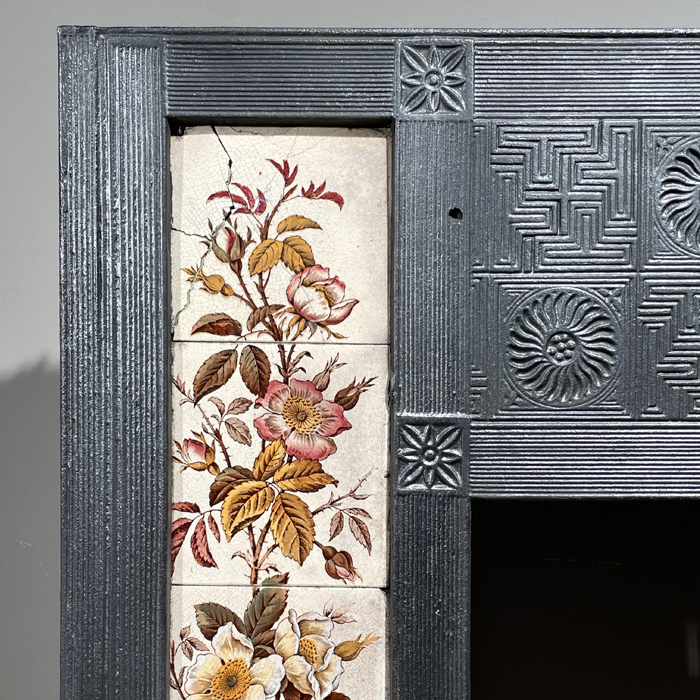Archived Stock - This item is no longer available
A Victorian tiled cast iron Parson’s Grate,
the flat facade with a reeded frame and a frieze of geometric squares flanked by a pair of tiled panels of polychrome plants in pots, the tiles probably by Minton,
SOLD OUT
Out of stock
This “Parson’s Grate” is likely to be from the extraordinary output of the great Victorian designer and architect Thomas Jeckyll – although, not bearing a foundry stamp it could be from a contemporaneous imitator.
LASSCO has enjoyed the buying and selling of numerous designs of these revolutionary stoves over the years. In their day – from the 1870’s they were very popular. They represented an innovative way of burning coal (as proposed in a long correspondence in The Times by a writer with the nom de plume “A Country Parson”), they were decorated with the beautiful relief-work inspired by Japanese blue and white porcelain.
Jeckyll, an established architect in East Anglia, formed a long relationship with a Norwich Foundry “Barnard, Bishop and Barnards” whose outlets in Norwich and Queen Victoria Street in London distributed these fashionable designs widely. The association between designer and foundry continued with the great world fairs of the 1860’s and 70’s – particularly London with his “Norwich Gates” in 1862 and later in Philadelphia and Paris where Barnards wowed the buying public with a two-storey cast iron Japanese-style pavilion – built to Jeckyll’s designs.
The “slow combustion stoves” and their accessories were the great commercial success. Jeckyll is best remembered for his “Peacock Room” – a spectacular, but ultimately controversial London interior, now held at the Smithsonian Institute in Washington D.C.

